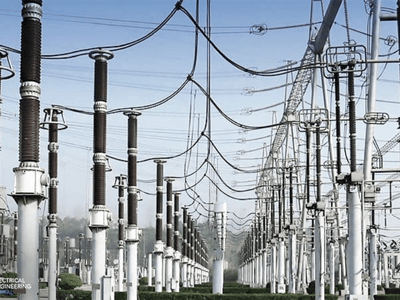Understanding Capacitive Voltage Transformers (CVTs): Function, Benefits, and Applications
In the world of high-voltage power systems, accuracy, safety, and stability are crucial. One of the essential components that make this possible is the Capacitive Voltage Transformer (CVT). CVTs play a significant role in power transmission, metering, protection, and communication in electrical grids.
In this blog, we will explore what CVTs are, how they work, their benefits, and where they are commonly used.
What is a Capacitive Voltage Transformer (CVT)?
A Capacitive Voltage Transformer (CVT) is a device used to step down high-voltage signals to measurable levels for protective relays, energy meters, and monitoring equipment. Unlike conventional electromagnetic transformers, CVTs use capacitive voltage dividers along with inductive elements to achieve voltage transformation.
CVTs are widely used in high-voltage transmission lines, especially above 100kV, where traditional transformers become less efficient and more costly.
How Does a CVT Work?
A CVT primarily consists of:
-
Capacitive Voltage Divider: Divides the high voltage into manageable levels.
-
Inductive Element (Compensating Reactor): Maintains voltage balance and accuracy.
-
Electromagnetic Unit: Converts the divided voltage into usable output.
-
Damping and Filtering Circuit: Improves accuracy and response time.
Additionally, CVTs serve as coupling devices for Power Line Carrier Communication (PLCC) systems, allowing signals to travel along high-voltage lines.
Benefits of Capacitive Voltage Transformers
1. Cost-Effective at High Voltages
CVTs are more economical than electromagnetic transformers in high-voltage applications because they use smaller core sizes and require less insulation.
2. High Accuracy for Metering and Protection
CVTs provide precise voltage measurements that are essential for protective relays and energy meters, ensuring the safety and efficiency of power systems.
3. Compact and Lightweight Design
Their smaller size and lighter weight make installation and handling easier, especially in large transmission networks.
4. PLCC Signal Coupling Capability
In addition to voltage transformation, CVTs are ideal for coupling communication signals to power lines, supporting real-time grid monitoring and control.
5. Reduced Maintenance Requirements
With fewer moving parts and simple construction, CVTs offer long operational life with minimal maintenance.
Applications of CVTs
-
High-Voltage Power Transmission Systems
-
Energy Metering for Utilities
-
Power System Protection and Fault Isolation
-
Power Line Carrier Communication (PLCC) Systems
-
Substations and Grid Monitoring Setups
Why Choose CVTs from Omkar Electronics?
At Omkar Electronics, we offer premium-quality Capacitive Voltage Transformers designed for precision, reliability, and safety. Our CVTs are built with superior materials, ensuring consistent performance even under challenging conditions. Whether for metering, protection, or communication, our CVTs are trusted across power plants, substations, and industrial facilities.
Final Thoughts
Capacitive Voltage Transformers are vital for the modern power infrastructure. They ensure accurate voltage measurement, protect power systems, and enable efficient communication across transmission lines. Choosing the right CVT ensures long-term reliability, cost savings, and optimal system performance.
If you are looking for dependable, high-performance CVTs, Omkar Electronics is your trusted partner.

